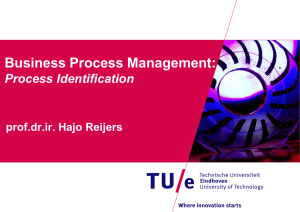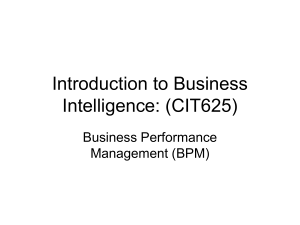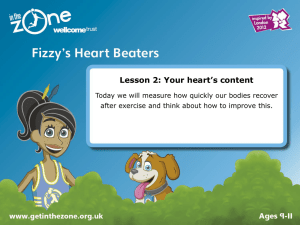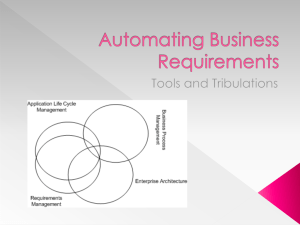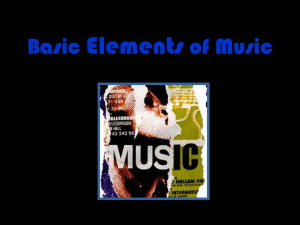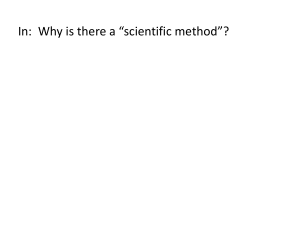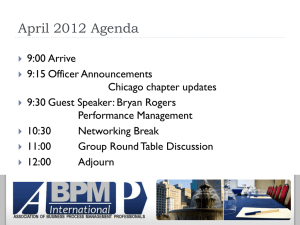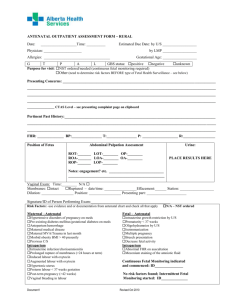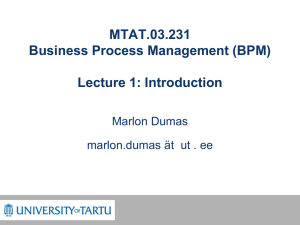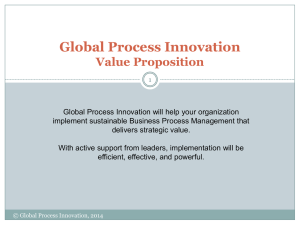2012 October Roundtable Discussion
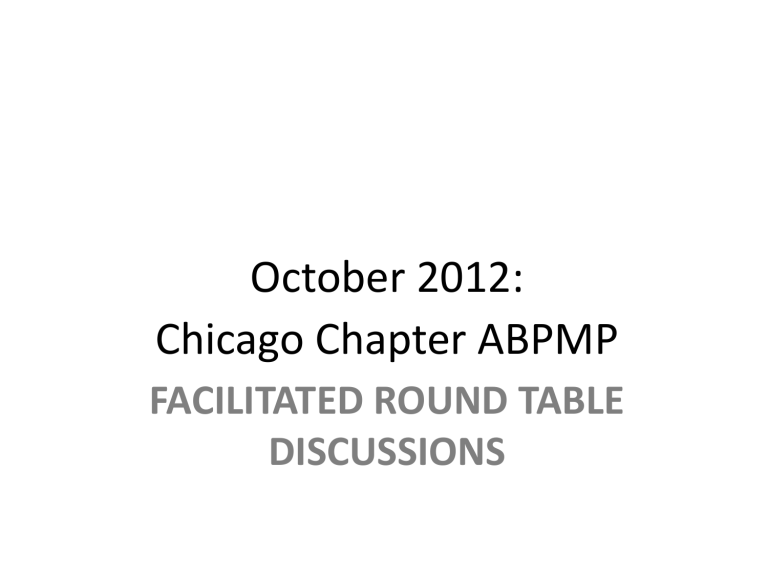
October 2012:
Chicago Chapter ABPMP
FACILITATED ROUND TABLE
DISCUSSIONS
Discussion Questions:
• During Nancy’s Presentation, she explained how her organization is seeing convergence of BPM and PM practices. Are you seeing the same convergence, or convergence with other organizations or management disciplines?
• What trends in BPM and Strategy do you see? Do you need a strategy?
• What BPM, CM, or yoga skills do you personally use in
BPM / process facilitation meetings?
• What are your successful ice-breakers, particularly for quiet people?
• Is BPM still providing monetary value?
During Nancy’s Presentation, she explained how her organization is seeing convergence of BPM and PM practices. Are you seeing the same convergence, or convergence with other organizations or management disciplines?
• Most are seeing need for or actual convergence with change management skills or departments:
– Meeting facilitation skills most important skill in BPM
– Tone and body language are biggest success factors in
BPM meetings
– Ability to build relationships and engage people are critical BPM skills
– Change Management is EVERYONE’s job in BPM.
Can’t separate the two
What trends in BPM and Strategy do you see? Do you need a strategy?
• Newer, smaller companies don’t have strategy. How can they when things change so quickly? They can only have short term strategy and can’t waste time on long term.
• All companies need to know what process goal they are planning to have as a differentiator and that should be part of both short and long term strategy. You need a strategy for this, it fundamentally stays the same.
• Strategy needs to have focused verbs, just like a process.
Allstate’s verbs: Protect, Restore, Prevent
• Use your data to come up with new products / services to go through your processes, this is not a change in strategy but an enablement of growth while keeping your strategy.
What BPM, CM, or yoga skills do you personally use in BPM / process facilitation meetings?
• Take a step back to see the whole: physically take step back
• Don’t react to words… stay connected with body language and tone
• Watch and listen: go to people’s office, desk to connect with them at their job on their level to understand their issues
• Pay attention to physical needs: energize people – make them get up and move. Whether as part of process modeling with markers and white board, or group exercises / break times
• Use ice-breakers as energizers. Keep a list of “good ones” in a box, and mix it up with each meeting to keep people who have been to several engaged.
• Prosci’s entire ADKAR formula
• Use humor. Relax and lighten up!
What are your successful ice-breakers, particularly for quiet people?
• What do you as a customer want? What company do you always recommend to your friends and why?
• What company do you hate to do business with and why?
• If you had to do another career, and money/skills was no object, what would it be?
• If you had another hour in your work day, how would you like to spend it?
• What are your top three issues, complaints, or biggest headaches in your job today?
Is BPM still providing monetary value?
• No:
– Generation Y: money is not enough, nor even important
– Shift with balance scorecard and other change management techniques is more towards people then profit
• Yes:
– Scorecard needs to be balanced. People don’t just do things to be nice, but because there is value
– People want to be engaged in their jobs… if you can get them out of the grunt work, yes they are more energized but this has monetary value as well.

